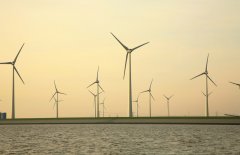
Carbon Capture and Storage
Carbon dioxide (CO2) is the biggest offender when it comes to Earth's greenhouse gas problem. It may not be the harshest and most toxic of air pollutants; however, it is the most prevalent one, thus capable of causing the most damage. Ideally it would be best if we stopped using fossil fuels altogether, although by the looks of it we won't anytime soon. Thus, we need other solutions, and carbon capture can help. Carbon dioxide can be captured in a few ways, most of which center around how we use coal. via a filtering system before it reaches the atmosphere. For the moment, we are making efforts to keep carbon dioxide underground or in its liquid form – in the future we may find a way to create synthetic fuels from it, thus creating a closed loop and a green solution.
via a filtering system before it reaches the atmosphere. For the moment, we are making efforts to keep carbon dioxide underground or in its liquid form – in the future we may find a way to create synthetic fuels from it, thus creating a closed loop and a green solution.
Green Remediation of Brownfield Sites
In many cities worldwide, brownfields have become an urban blight. Abandoned factories and other industrial sites often fall into disuse and are left to rot, ravaged by time. Places suffering this kind of structural decay are called brownfield sites. Brownfields require remediation and special care to make them safe for living and working again. e by conventional methods, we either remove soil that has been contaminated through industrial decay or burn it; either method creates all manner of environmental problems. Green remediation of brownfield sites uses alternative sources of energy like solar and wind power for any machinery used in the process, making brownfields capable of supporting life safely.
e by conventional methods, we either remove soil that has been contaminated through industrial decay or burn it; either method creates all manner of environmental problems. Green remediation of brownfield sites uses alternative sources of energy like solar and wind power for any machinery used in the process, making brownfields capable of supporting life safely.
Biohydrocarbons
According to the Hubbert peak oil theory, our reserves of oil at any geographic location are finite; therefore it is highly likely we will eventually run out of places to drill for this massively used resource. Because at this time we have no way of knowing the exact amount of oil available around the world, neither can we know whether our reserves have entered a state of decline. t that our time is limited and that alternate solutions have to be found and used. One of these alternatives is biohydrocarbon fuel. It is essentially a biomass of plants with high fatty acid content, mixed with hydrogen through the use of a catalyst such as cobalt, producing a biofuel high in energy. One of the stock plants used, Camelina sativa (wild flax), can be cultivated in rotation with food crops and can be processed into a jet fuel that emits 85% fewer emissions of greenhouse gases than kerosene. The jet fuel made from Camelina sativa is suitable for use in commercial applications, as Japan Airlines proved back in January 2009, when they used it in a 747 in a 50/50 mix with regular jet fuel.
t that our time is limited and that alternate solutions have to be found and used. One of these alternatives is biohydrocarbon fuel. It is essentially a biomass of plants with high fatty acid content, mixed with hydrogen through the use of a catalyst such as cobalt, producing a biofuel high in energy. One of the stock plants used, Camelina sativa (wild flax), can be cultivated in rotation with food crops and can be processed into a jet fuel that emits 85% fewer emissions of greenhouse gases than kerosene. The jet fuel made from Camelina sativa is suitable for use in commercial applications, as Japan Airlines proved back in January 2009, when they used it in a 747 in a 50/50 mix with regular jet fuel.









